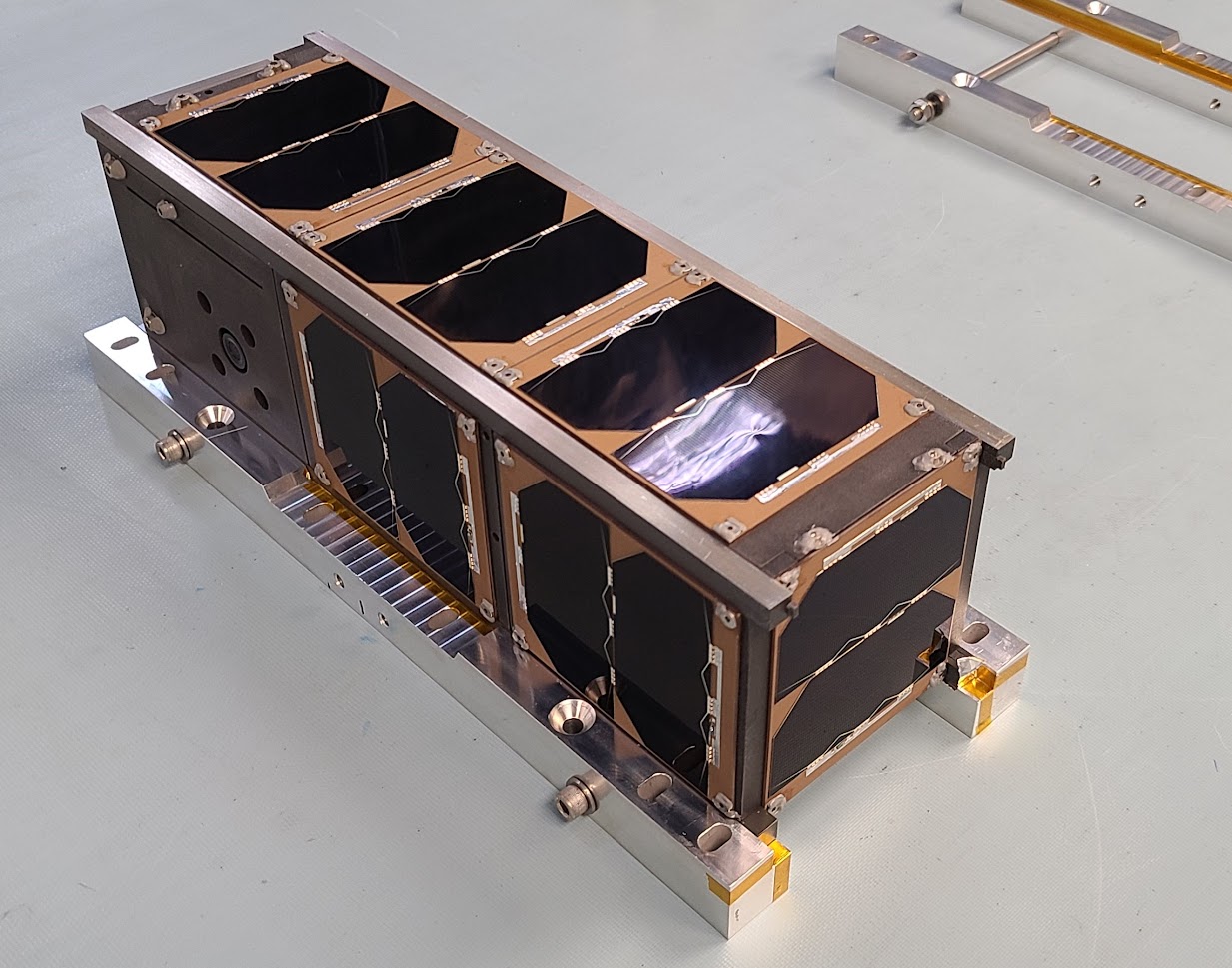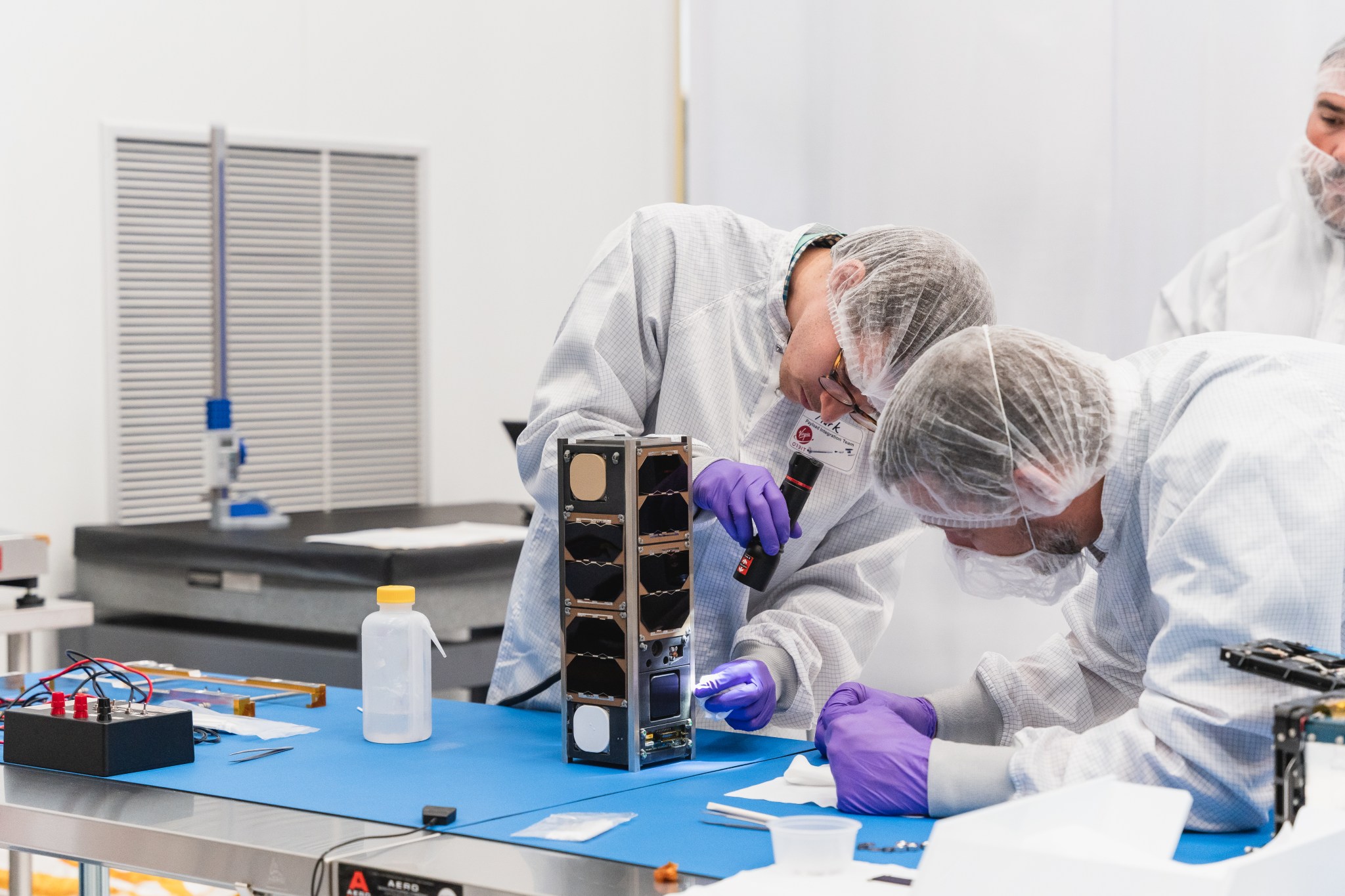The NASA Langley Research Center GPX2 CubeSat demonstrates new spacecraft structure and space communications technologies that could help save on development time, weight, and cost to fly.
The GPX2 mission contributes to the SmallSat community with the development of technologies to build low-cost, quick turnaround spacecraft, evaluate the viability of on-orbit differential GPS using low-cost “Commercial Off-The Shelf” or “COTS” GPS receivers, and further refine the use of Iridium satellite communications to send and receive information.
The United States Space Force launched seven satellites from multiple government agencies on their STP-S28A mission as part of the United States Department of Defense’s (DoD) Space Test Program (STP). STP-28A launched on a Virgin Orbit LauncherOne rocket, Friday, July 1 at 10:49 PDT. GPX2 is one of two NASA-sponsored research satellites that are part of part of the 39th Educational Launch of NanoSatellites (ELaNa) mission flying on STP-28A.
The rocket uses an air-launch design, where a 747-aircraft, operating out of the Mojave Air and Space Port, releases the rocket during flight, and then the rocket ignites and ascends to space.
“This type of high-risk tolerance project allows us to learn how to use low-cost, emerging technologies that don’t have an extensive track record” said Kurt Woodham, GPX2 project manager. “We have goals for technical and science data we hope to collect throughout the mission, but even if we fall short of those goals, we have learned a lot about how to design, build, and test low-cost SmallSat missions, and that helps us build out our engineering capabilities.”
The 3U GPX2 CubeSat measures 30 x 10 x 10 centimeters, about the size of a loaf of bread, and weighs around 3 kilograms, or 7 pounds. The spacecraft chassis, or structure that all of the internal and external components are mounted to, uses an additive manufactured composite material called Windform XT 2.0. Demonstrating the use of a composite 3D printed spacecraft chassis will reduce the use of complex and costly machining processes, and provide greater specialization of lightweight structures for future SmallSat missions.
GPX2 also has two antennas that will use off-the-shelf GPS receivers in differential mode – measuring the distance between the two antennas. If GPX2 can help establish the viability of using differential GPS, the mission will advance its potential use for satellite formation flying or calculate the distance from other spacecraft flying in close proximity to support on-orbit assembly.
Building on research started at NASA’s Ames Research Center in California’s Silicon Valley, GPX2 uses Iridium, a global satellite communications company, to send and receive communications and telemetry through email. This technology allows operations from anywhere using a prepaid data service that doesn’t require a dedicated ground system.
ELaNa 39 was selected through NASA’s CubeSat Launch Initiative (CSLI). NASA’s Launch Services Program based at the agency’s Kennedy Space Center in Florida manages CSLI, and facilities pairing the CubeSats with a suitable launch vehicle to meet their needs.































